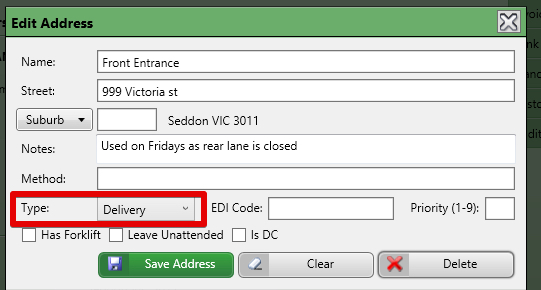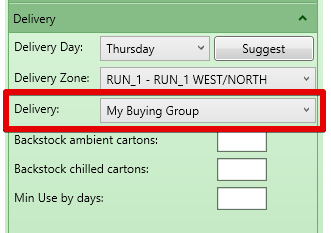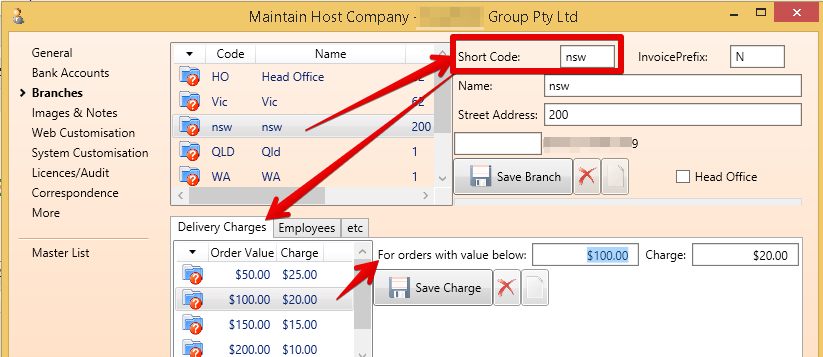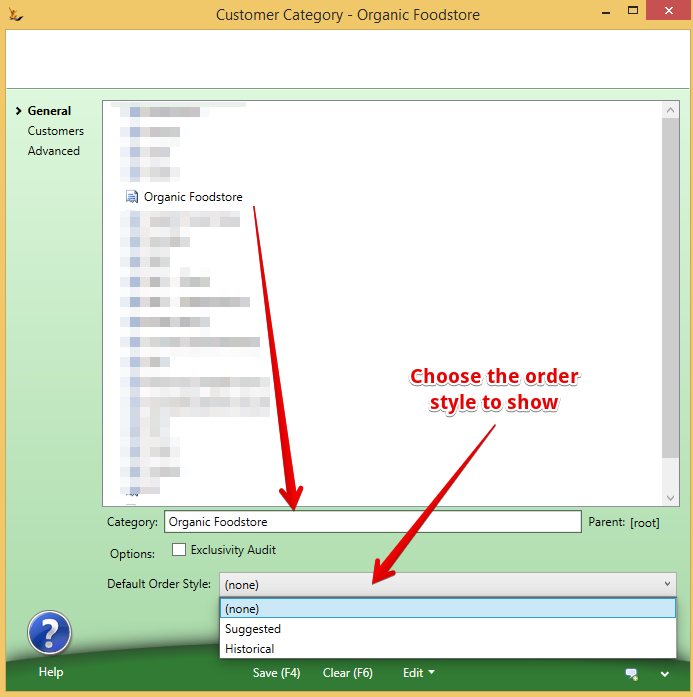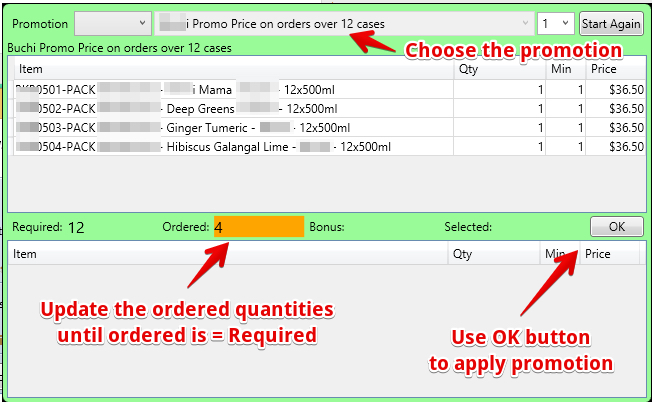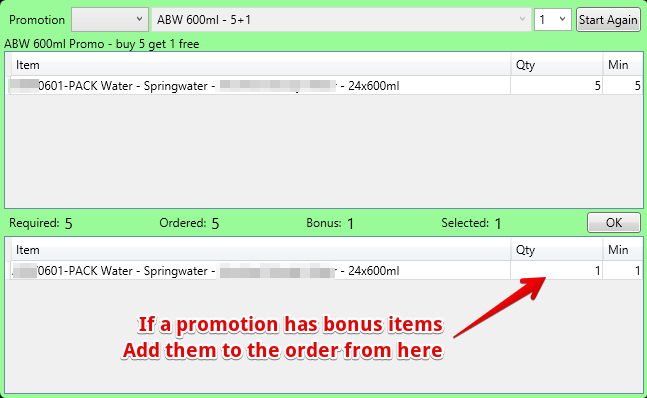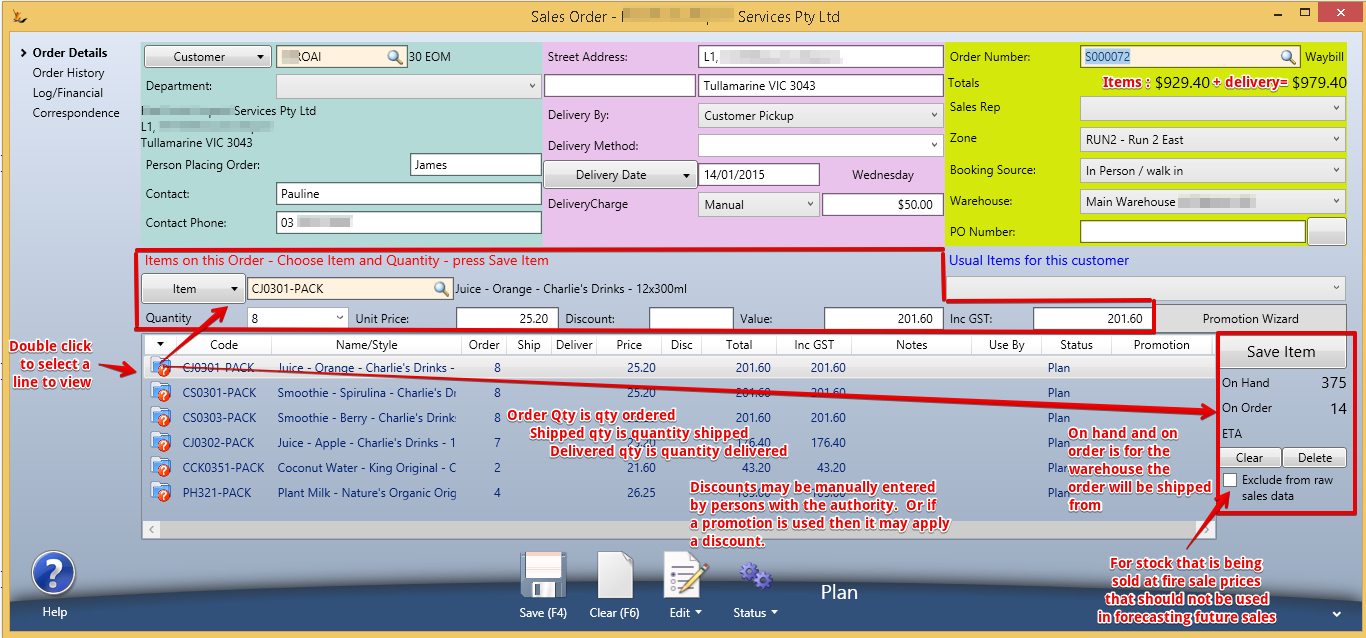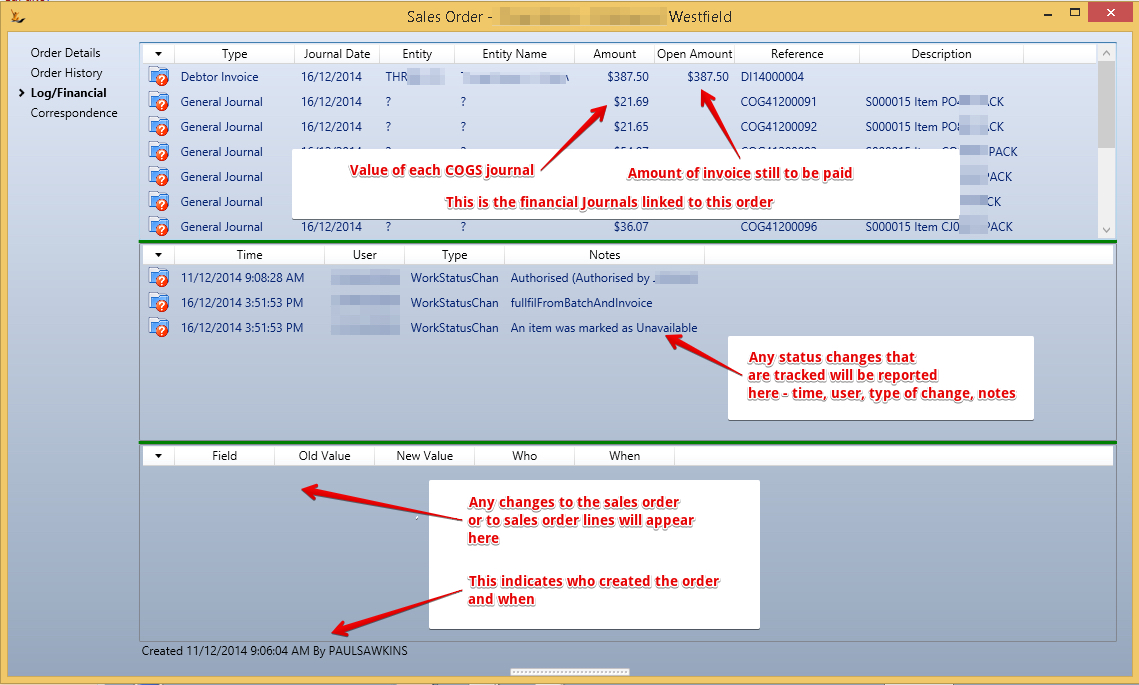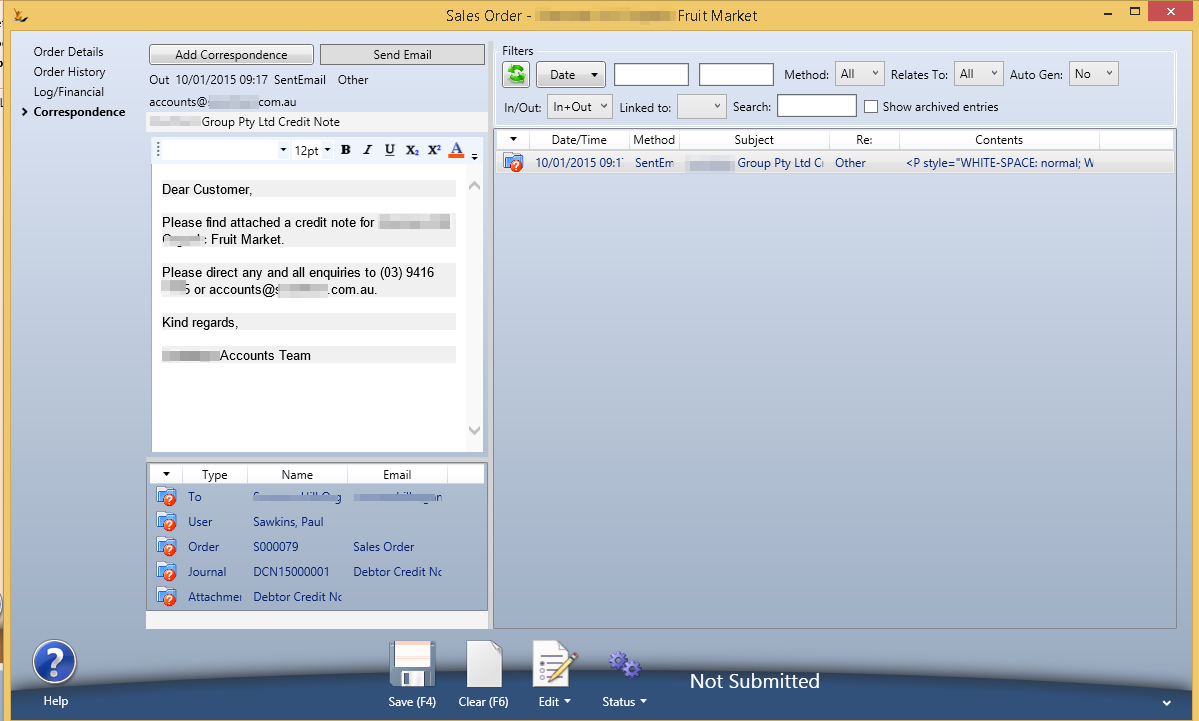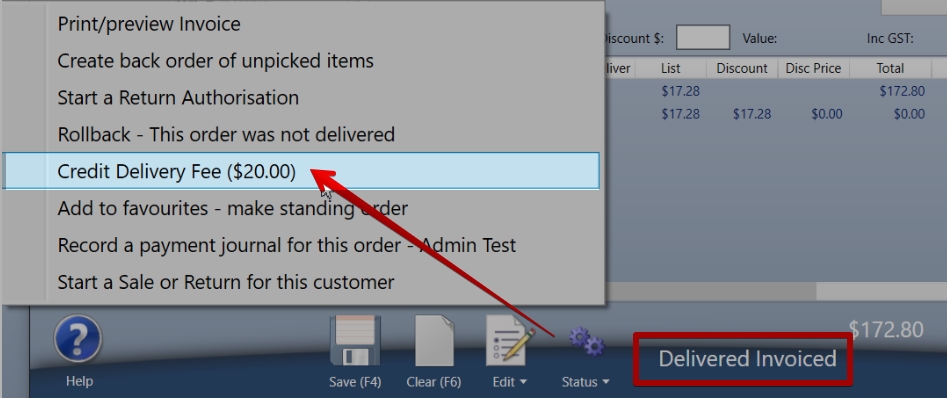Use Sidebar LHS to navigate
For global help click here
Sales Orders in perishable goods
If you need to understand the options and alternatives within a sales order dealing with perishable goods please review this document.
Table of Contents
SaaSplications ERP is configured differently for each business. This document is intended to show capabilities and may not be the way the system would be configured for your business.
Sales orders in General
A Sales order keeps track of:
- The amount the customer ordered
- Any promotions or discounts that were applied
- The amount that was picked
- It knows how the product is to get to the customer
- The amount that was despatched or delivered
- It links all the related financial documents together (invoices, credit notes, COGS (cost of goods sold) journals)
- It tracks when things happened, who did them and any changes that were made
Recommended Orders
The system can recommend order quantities using customer recent history of items they regularly purchase.
Sales Reps and Telesales entering Orders
To rapidly enter a sales order different businesses may use simplified order views
A simple order screen example - and where values come from
- Order number is created on saving the order (note that it currently has "AUTO" - indicating the next sequential number will be used when saved.
- Totals - is the order total
- When the order is first opened it shows the $ if the recommended order amount was placed where a recommended order is used
- When you start entering order quantities - this value then shows the order value
- Units is the number of cartons on the order - useful for organisations with limited storage space
- Person Placing Order - can be a mandatory field - allows capture of the person who placed the order
- Department - if the Company has departments - then they are available in this list. Changing the department may change the contact referred to.
- Contact, contact phone
- Default value
- If a customer department (eg Grocery) is chosen this is replaced with any contact on the debtor linked to that customers department
- Otherwise default comes from the Company card details
- Default value
- To : is the delivery address the product is to be delivered to
- The list comes from the list of addresses marked as delivery addresses on the Customer this is the address details that show when you double click on one of the debtor addresses
- The list comes from the list of addresses marked as delivery addresses on the Customer this is the address details that show when you double click on one of the debtor addresses
- Delivery by - is how the goods are transported to the customer
- Options in the list
- Our Vehicles - indicates our own trucks drop product directly at the customer
- Rep / Other Employee - indicates the order will be taken directly to the customer by an employee - normally a sales rep who will visit the store
- Buying Group - When a customer is part of a buying group - often you will deliver to the buying group DC (Distribution Centre), the buying group will then deliver to store. This is common with very large organisations.
- Courier Pickup - when an external company will pickup the goods and take them to the customer
- Customer Pickup - when the customer will send their own vehicle to pickup the goods.
- Default
- The Customer has a default value
- The Customer has a default value
- Options in the list
- Delivery Charge - is an additional charge on the sales order for delivery
- Auto
- Company wide settings on Host Company
- Delivery Zone calculations for customers Delivery Zone
- a system calculated charge based on looking up a table by branch (if using branches) on the Host Company
- Manual - when a manual value is entered into the system
- None - when delivery charge is being waived
- note the customer can be flagged as "Never charge freight"
- Yes - when a delivery charge will apply but is not yet known
- Delivery charges are re-calculated with changes until Authorised status (and not after that - ie after short picking)
- Auto
Managing the Sales Order
- Save button saves the order
- Clear button clears the screen
- Edit button has other actions that can be taken on this order
- Status button allows for user to change to available statuses
- The status is visible at all times (note this image shows the order as "Not Submitted")
- Create Order button - saves the order as described and is only visible while recommendations are still visible
- Based on Cycle allows you to change the cycle and recalculate the recommended quantities to order
- The promotion wizard allows you to review the promotions available to this customer and add items to the sales order
Gross Profit Calculation
Gross profit is only visible to users with secure feature "Sales Manager" - see Secure Features
The Gross Profit Calculation is as follows
GP = (Discounted Value of order - COGS) / Undiscounted Value of Order
Different Views in the Sales Order Grid
For different customers it may be appropriate to see different information in the sales order grid
Recommended Order Grid
Columns - product category, Item number, Item Description, Cartons per week for this customer, seasonal trend, Suggested order qty, $ each, Order Qty (touch friendly)
For customers who do not have a system that tells them how much to order
For customers who order regularly
Helps to ensure that all products will run out about the same time - to avoid deliveries for a few products between ordersThe system recommends the qty of each stock line to purchase using
- Rate per week (based on last 13 weeks or 5 orders)
- Plus Trend
- Time to next order (Order cycle)
Great when you want to change the order cycle and still ensure you get enough stock to last until the next order
Historical Order Grid
Item Code, order qty (touch friendly), qty delivered 1 week ago (qty ordered if different), qty ordered 2 weeks ago (qty ordered if different), etc
For customers who order frequently and have an internal system that advises them what to order
Shows history over previous weeks purchases
Helpful for showing customers their history as part of a discussion
How does the system decide which grid to show?
In some cusomers the default order grid is based on the customer category
Unless otherwise nominated the Recommended Order Screen is the Default view when creating new orders from /wiki/spaces/SE/pages/32638139 or /wiki/spaces/SI/pages/33055150
Sales Promotion Wizard
See Price Promotions for stock for how to setup and use promotions.
The sales order form has a promotion wizard. The wizard will find any promotions that the customer and order qualifies for.
Choose the promotion to apply and the quantities to use.
Example with a bonus item
Any line with a related promotion will have a reference to the promotion. Removing a promotion (use right click on the line) will affect all lines linked to that promotion.
Tracking progress of a sales order
Detailed Sales Order Form example
This can also be used for entering Sales Orders and keeping track of the sales order over time
Order History
A Tab for historical order history - showing the quantities ordered over the last 13 weeks by this customer
Journals and Audit Trails
A view of the Audit Trail and related financial documents
Perishable Goods Invoices - promotions, discounts, rebates
The GL accounts on an invoice may come from a number of places - the SKU being sold, the promotion being applied, the service being sold, or default GL Control Accounts
Perishable goods invoices have the following journal lines for the sale of a Stock Article:
- Revenue related to selling the stock article (sell price)
- The promotion or discount related to that article GL account and impact (so can have a GL accounts that track discounts provided by promotions)
- Any Rebate expected to be claimed from a supplier from the promotion (so can raise a claim directly from this line)
The customer does NOT see this detail - and the printed invoice document does not have all these lines - it has a single line.
Sending emails and tracking correspondence
The ability to send emails using templates or track other correspondence relating to the order
Crediting the Delivery Fee
After the Sales Order has been delivered and Invoiced (prior to this you can simply update the delivery fee on the order)
Use the Action menu on the order if you wish to credit the delivery fee
Sudden Increase in Spend Orders onto Hold
When a sales order is more than 50% larger than the average of the last 6 orders - the order will be put on hold.
A sudden large increase in spend normally indicates another supplier has decided not to do business with this company or they may be at risk of default.
For information about SaaSplications go to http://saasplications.com.au

